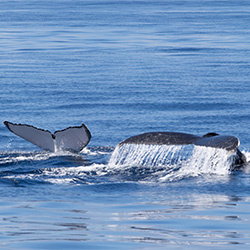- Joined
- Nov 24, 2016
- Messages
- 719
- Reactions
- 337
- Age
- 66
I was just informed by a NOAA law enforcement officer that drones are considered aircraft and are not allowed within 1,000 feet of a humpback whale. I routinely see helicopters - you know those INCREDIBLY loud aircraft that you can hear from miles away - circle whales at between 250 and 600 feet. The officer then sped away in his boat with four powerful and also incredibly LOUD engines that have been proven to disrupt the whales. I had a hydrophone in the water and the motors drowned out the whale sounds for several minutes. And I'm not allowed within 1,000 feet? Holy cow. Anyway. FYI. I always keep a respectful distance but the 1,000 foot limit was news to me.











